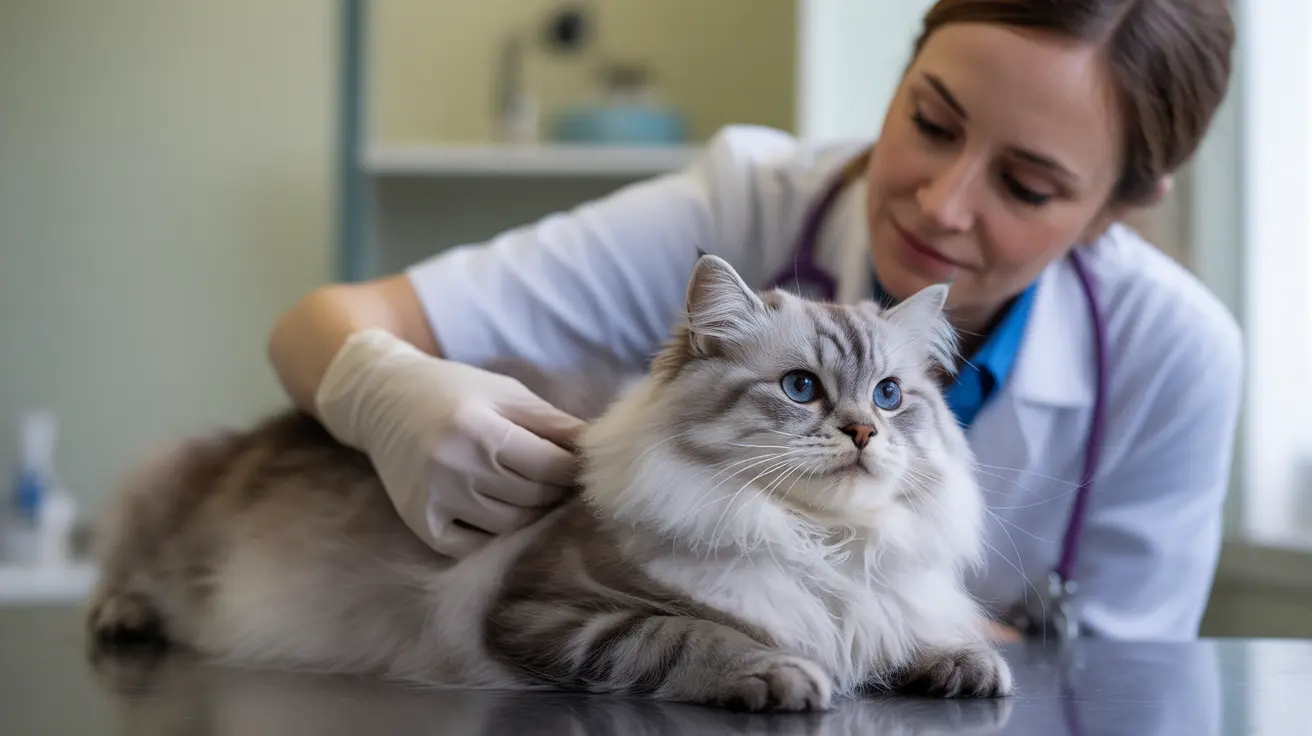Finding a lump on your cat can be a frightening experience. While not every bump indicates cancer, understanding what a cancer lump on cat looks like and knowing when to seek veterinary care is crucial for your pet's health and wellbeing.
In this comprehensive guide, we'll explore everything you need to know about cancer lumps in cats, including identification, diagnosis, treatment options, and prevention strategies. Early detection and proper veterinary care can make a significant difference in your cat's prognosis.
Common Types of Cancer Lumps in Cats
Several types of cancer can manifest as lumps or bumps on cats. Understanding these different types can help you better communicate with your veterinarian:
Lymphoma
As the most common feline cancer, lymphoma can present as external lumps or internal masses. These tumors often affect the lymph nodes, causing visible swelling under the skin.
Mast Cell Tumors
These typically appear as raised, pink or reddish bumps on the skin. They can vary in size and may change appearance over time.
Mammary Tumors
Primarily affecting unspayed female cats, these lumps develop along the mammary chain and can be particularly aggressive in felines.
Identifying Potential Cancer Lumps
When examining your cat for potential cancer lumps, look for these warning signs:
- Firm, irregular masses under the skin
- Lumps that grow or change shape
- Non-healing sores or wounds
- Swelling that persists or worsens
- Any new bump that doesn't resolve within a few weeks
The Diagnostic Process
When a suspicious lump is found, veterinarians typically follow these steps:
Physical Examination
Your vet will thoroughly examine the lump, noting its size, shape, location, and whether it's fixed or mobile under the skin.
Diagnostic Tests
Common procedures include:
- Fine needle aspiration (FNA)
- Biopsy
- Blood work
- Imaging (X-rays, ultrasound, or CT scans)
Treatment Options
Treatment for cancer lumps depends on several factors, including:
- Type and stage of cancer
- Location of the tumor
- Your cat's overall health
- Age and quality of life considerations
Common treatment approaches include:
- Surgical removal
- Chemotherapy
- Radiation therapy
- Palliative care
Prevention and Monitoring
While not all cancers are preventable, these steps can help reduce risk:
- Regular veterinary check-ups
- Monthly at-home examinations
- Spaying female cats early
- Maintaining a healthy diet and lifestyle
- Limiting exposure to environmental toxins
Frequently Asked Questions
How can I tell if a lump on my cat is cancerous or just a harmless bump?
Only a veterinarian can definitively determine if a lump is cancerous through proper examination and testing. However, concerning signs include rapid growth, changes in appearance, irregular shapes, and firmness.
What are the most common warning signs that a cat lump might be cancer?
Key warning signs include rapid growth, changes in size or shape, non-healing sores, and accompanying symptoms like weight loss, decreased appetite, or lethargy.
What causes cancer lumps on cats and how can I reduce my cat's risk?
Cancer lumps can be caused by genetic factors, environmental toxins, viruses, and age-related changes. Reduce risks through regular vet visits, early spaying, maintaining a healthy lifestyle, and limiting exposure to known carcinogens.
How does a vet check a lump on my cat for cancer, and what tests are involved?
Veterinarians typically perform a physical examination, followed by diagnostic tests such as fine needle aspiration, biopsy, blood work, and imaging studies to determine the nature of the lump.
What are the treatment options if my cat's lump turns out to be cancer?
Treatment options may include surgery, chemotherapy, radiation therapy, or a combination of these approaches. The specific treatment plan depends on the type of cancer, its stage, and your cat's overall health status.
Remember, early detection and prompt veterinary attention are key to achieving the best possible outcomes for cats with suspicious lumps. If you notice any unusual bumps or changes in your cat's body, don't hesitate to consult your veterinarian.






